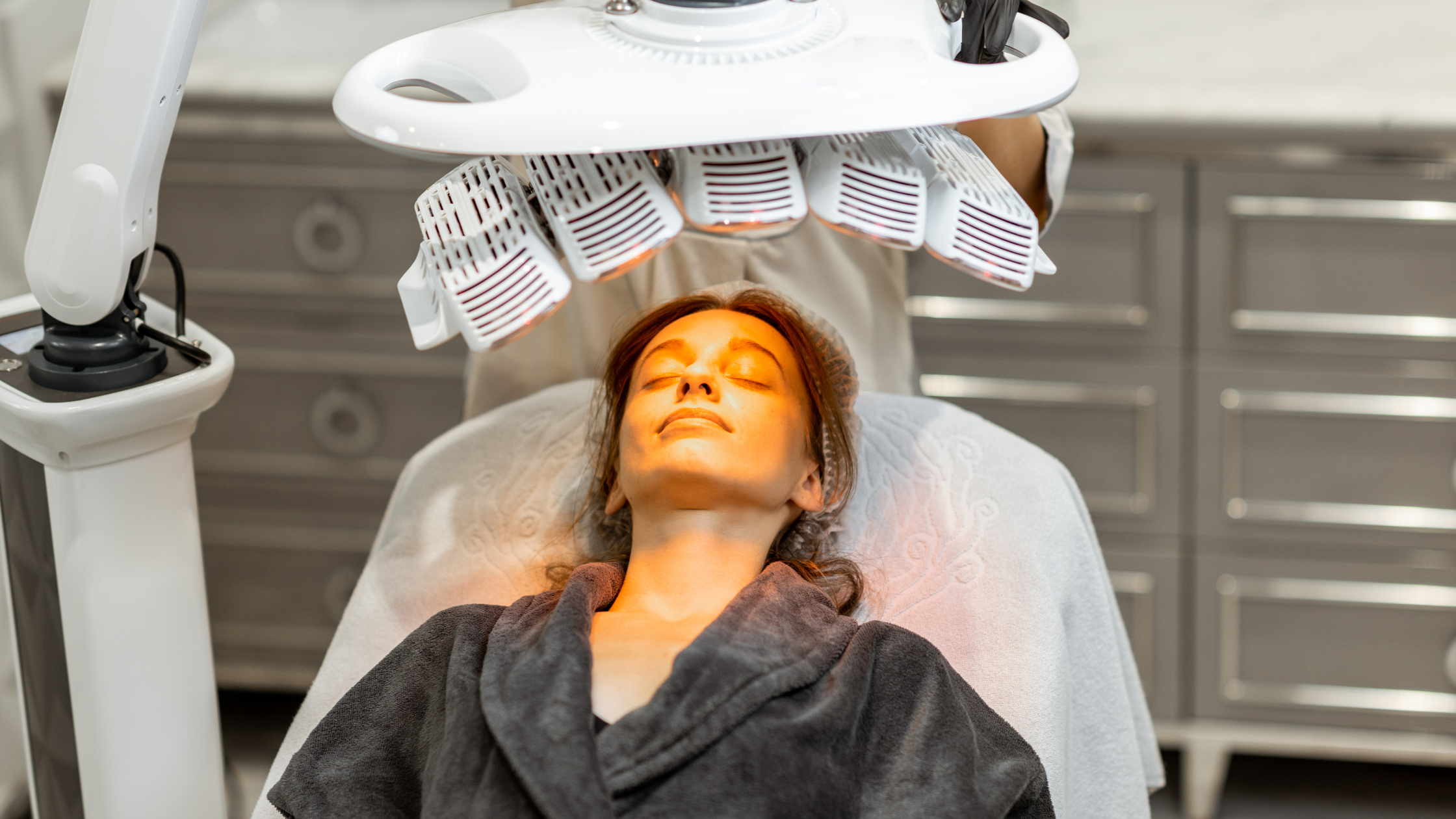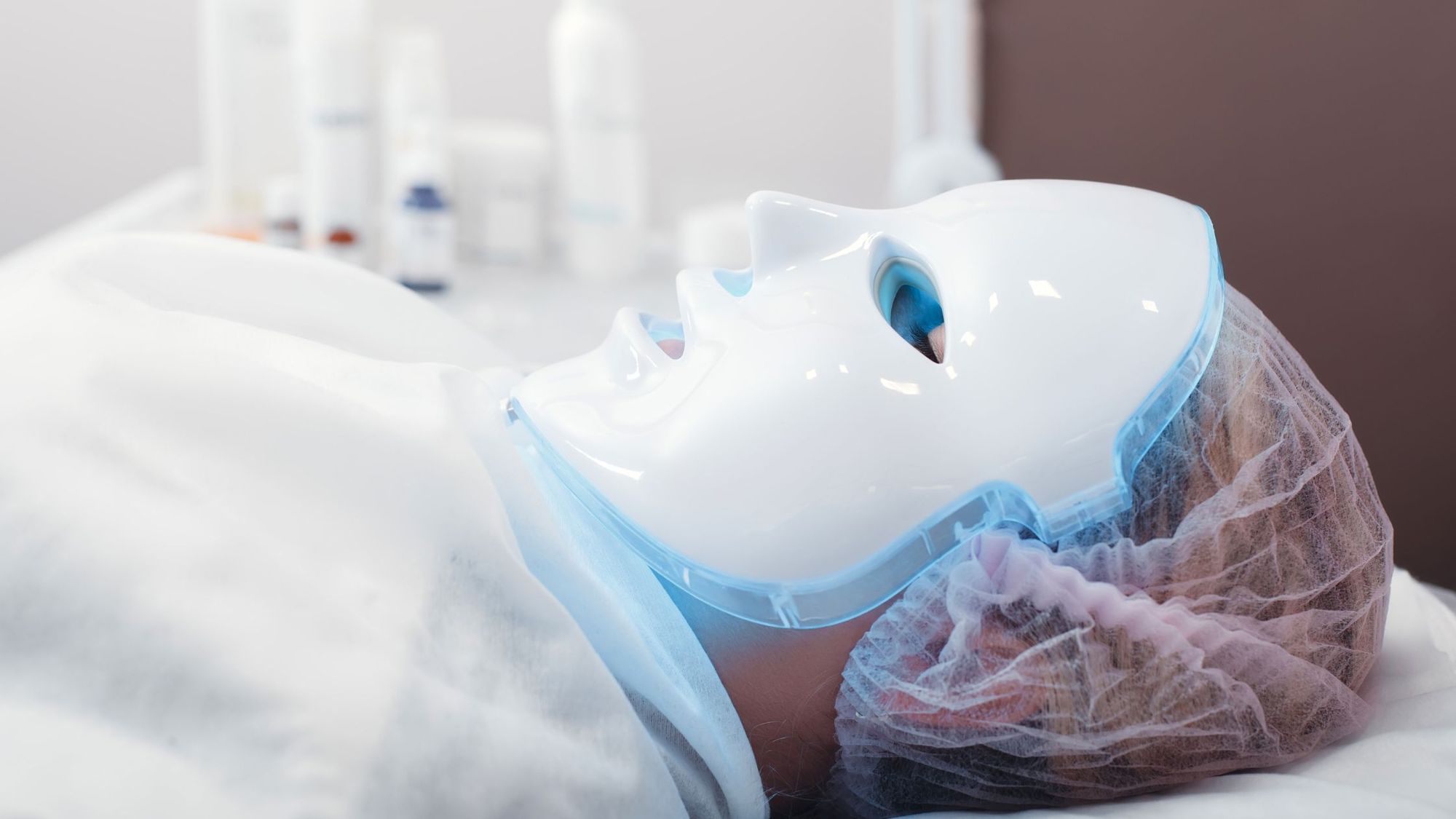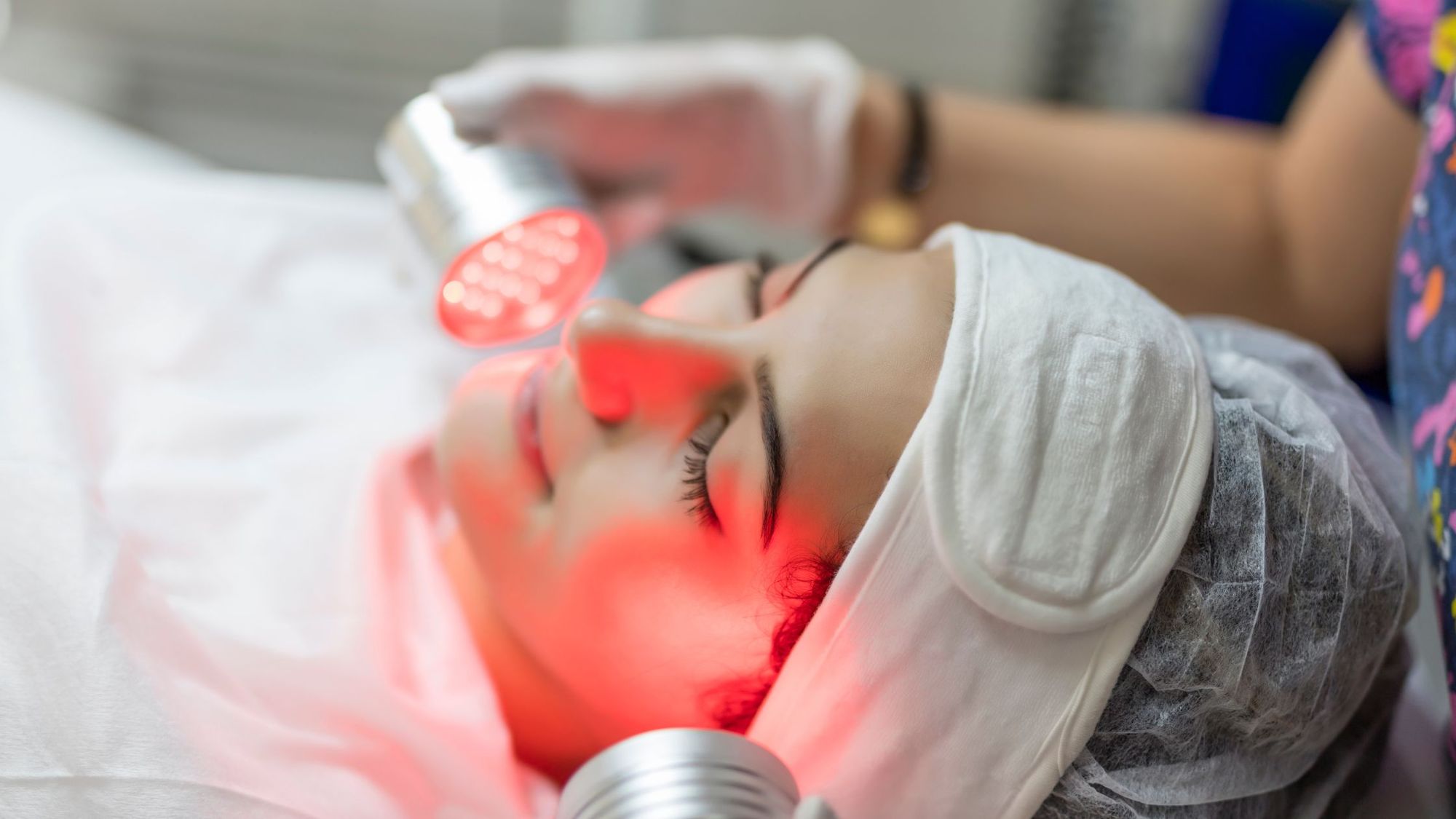
Light therapy benefits are more diverse than most people realize. This is because light is a powerful tool for both mental and physical health. We know we need sunlight to synthesize vitamin D production and strengthen our immune systems. However, man-made light in the form of “phototherapy” can also be extremely helpful in a range of circumstances, and to treat various conditions.
For years, medical professionals and therapeutic practitioners have recommended “phototherapy” for the treatment of a multitude of health conditions. While most people associate light therapy with Seasonal Affective Disorder (SAD), research suggests exposure to different types of light at varying intensities can lead to a number of benefits.
For instance, red light therapy, a treatment attracting increasing attention in recent years, may be able to help reduce the appearance of wrinkles, scars, acne, and other skin conditions while improving the overall look of your skin.
Alternatively, bright light therapy can help reset the body’s circadian rhythm – the body clock which influences how regular our sleep-wake cycle is.
What is Light Therapy and How Does it Work?
Light therapy, also known as phototherapy, is a therapy tool which involves exposing the body to an artificial light source. Scientists have been studying light therapy benefits for decades.
During the 1990s, NASA began exploring whether LED therapy could help heal astronaut wounds by promoting the production of new cells and tissues. In recent years, medical professionals have even begun recommending light therapy as an approved treatment for various mental health disorders.
Light therapy is often considered a good treatment option for many conditions, because it’s easily accessible, and typically has few negative side effects. Most treatments involve using a light therapy box or lamp, capable of emitting light at certain frequencies. Users sit close enough to the lamp to ensure their skin and eyes can absorb the wavelengths for a certain period of time.
Notably, there are different kinds of light therapy, all with their own unique benefits to consider. Phototherapy practitioners use various wavelengths corresponding to different colors. For instance, blue light therapy affects the uppermost layers of the skin, and can sometimes be effective at destroying acne-causing bacteria in people with overactive sebum glands.
Red light therapy travels deeper into the epidermis, and may be effective at reducing inflammation, stimulating the production of collagen, and strengthening the metabolism.
Light Therapy Benefits: The Best Uses for Light Therapy
Light therapy benefits vary depending on the type of light used. Although research into phototherapy is still ongoing, studies have revealed a number of potential use cases for light treatments. Here’s how certain kinds of light therapy can tackle a variety of conditions.

Light Therapy for Seasonal Affective Disorder (SAD) and Depression
Perhaps the most common type of light therapy involves the use of a light box at home, for treating Seasonal Affective Disorder, or SAD.
SAD is a type of depression linked to specific seasons of the year. People with this issue find they’re more likely to feel symptoms during the colder and darker months of the year like the winter months.
Experts believe SAD is exacerbated by longer ‘dark’ hours, a lack of access to natural sunlight and vitamin D. Light therapy can help to mitigate this issue, and improve various symptoms associated with depression.
During a light therapy session, one would sit next to a light box or lamp emitting bright light at a range of 2,500 to 10,000 lux. This light is designed to simulate outdoor sunshine, helping the body to produce substances such as serotonin, vitamin D, and melatonin.
For people suffering from Seasonal Affective Disorder, light therapy can be a valuable tool for balancing the serotonin production in the brain, which contributes to mood regulation. Studies have shown mood enhancements can occur within as little as 20 minutes of light exposure.
Additionally, aside from improving overall mood, light therapy can refresh the circadian rhythm, minimizing sleep issues, improving energy, and increasing alertness. Because light therapy is considered to have a direct impact on serotonin production, many researchers believe it may also be beneficial for treating different kinds of depression, outside of SAD.

Light Therapy for Skin Disorders
Certain types of light therapy may also be useful for tackling skin disorders and common skin conditions, such as eczema, psoriasis, and acne. For decades, phototherapy has been used to treat skin conditions ranging from vitiligo to tuberculosis.
In recent years, studies have found phototherapy treatments using blue light to be successful in reducing the number of blemishes seen by acne sufferers.
Experts believe blue light can help to eliminate bacteria in the upper layers of the skin, controlling acne outbreaks before they can occur.
Red light therapy, which targets deeper layers of the skin, may also have a number of benefits for users. Research into red light therapy indicates exposure to red wavelengths could help to stimulate collagen production in the epidermis, smoothing lines, and wrinkles.
Researchers also believe red light can help to decrease inflammation under the skin, which can ease redness and puffiness, as well as contributing to the formation of new hair follicles. One literature review found exposure to red light could increase hair density and thickness in people experiencing premature hair loss.
Light Therapy for Weight Loss and Boosting Metabolism
Light therapy is also drawing attention as a possible solution for weight loss. Known as “LLLT”, low-level laser therapy is a form of body sculpting technique which involves the use of low-irradiance lasers emitting wavelengths of infrared, blue, and red lights.
Though how this technology works is still unclear, some specialists believe the various wavelengths help to break down part of the cell membrane underneath the skin, allowing stored fat to be diminished as part of the body’s natural waste removal process.
Currently, the research around light therapy for weight loss is limited. One study found people who received LLLT treatments for 2 weeks lost significantly more inches from their hips, thighs, and abdomen overall than a control group.
Another randomized study found the use of light therapy led to significant decreases in upper arm circumference for participants.
Studies have also found the use of light therapy in combination with exercise can help to accelerate weight loss by promoting the healthy performance of the metabolism. Since various forms of light therapy can also help with both reducing inflammation and increasing energy, exposure to phototherapy could potentially help individuals to see better results from their weight loss routines.
Light Therapy for Sleep Disorders
One of the top light therapy benefits often explored by scientists, is its potential to improve sleeping patterns and reduce symptoms of insomnia. Experts believe light therapy could be an effective way of resetting the “circadian rhythm”, or internal body clock, which dictates how alert or sleepy we feel at different times during the day.
Light therapy treatments for insomnia are similar to those used for Seasonal Affective Disorder. They often involve asking an individual to sit in front of a special light box for a specific period of time each day. Most light therapy sessions for sleep are conducted in the morning, to help increase alertness, and regulate the sleep-waking cycle.
Scientists believe light is the strongest cue for training our circadian rhythm. By exposing ourselves to bright lights in the morning, we tell our bodies to reduce the production of melatonin (The sleep hormone) and increase development of cortisol for energy and alertness.
Studies have shown light therapy to be effective at addressing various forms of sleep disorders, from insomnia to delayed sleep phase syndrome (DSPS). It may even help people recover faster from jet lag, when changing time zones can lead to problems falling asleep.
Other Potential Light Therapy Benefits
Studies into light therapy benefits are still ongoing, but scientists have begun to discover a range of other potential use cases for different wavelengths of light. “Photodynamic therapy” shows great potential as a treatment for various kinds of cancers and precancers.
In photodynamic therapy, patients take a specific kind of drug called a “photosensitizer” before being exposed to light. The reaction between the light may help to kill cancer cells.
Research into red light therapy has begun to suggest this form of phototherapy could also be effective at reducing feelings of pain. LLLT has been used to control discomfort for people suffering from neuropathy or nerve pain, as well as excessive inflammation.
Scientists have begun exploring the use of this therapy for cancer of the esophagus, endobronchial cancer, and “Barrett’s esophagus”.
Historically, medical professionals have also used light therapy for the treatment of conditions which often happen during infancy. For instance, jaundice and hyperbilirubinemia, conditions which cause a baby’s skin and body tissues to turn yellow, are caused by excessive amounts of bilirubin in a child’s blood. Light helps to break down the bilirubin so it can be excreted naturally from the body.
Does Light Therapy Really Work?
There’s no guarantee that the benefits of light therapy will be the same for everyone. Some people respond differently to various forms of phototherapy. However, the research does suggest that light therapy could have several advantages for a range of physical and mental health conditions.
Notably, however, light therapy can have its risks as well. Certain types of UV rays can damage skin cells, which is why it’s so important for patients to ensure they’re being exposed to the correct type of wavelengths. Different forms of light therapy can also cause side effects, including migraines, nausea, and even trouble sleeping.
Most medical professionals will recommend avoiding light therapy if you have a family history of skin cancer, lupus, or liver disease. Check your CircleDNA test results to determine whether phototherapy might be suitable for you, or whether you have genetic links to these cancers and should perhaps avoid it.
References:
- NASA: NASA Research Illuminates Medical Uses of Light
https://spinoff.nasa.gov/NASA-Research-Illuminates-Medical-Uses-of-Light - NCBI: Bright Light as a Personalized Precision Treatment of Mood Disorders
https://www.ncbi.nlm.nih.gov/pmc/articles/PMC6405415/ - Cambridge: Light therapy for non-seasonal depression: systematic review and meta-analysis
https://www.cambridge.org/core/journals/bjpsych-open/article/light-therapy-for-nonseasonal-depression-systematic-review-and-metaanalysis/B3250B41E529EF84538BD136F5F14F87 - NCBI: Clinical Efficacy of Self-applied Blue Light Therapy for Mild-to-Moderate Facial Acne
https://www.ncbi.nlm.nih.gov/pmc/articles/PMC2923954/ - NCBI: A Controlled Trial to Determine the Efficacy of Red and Near-Infrared Light Treatment in Patient Satisfaction, Reduction of Fine Lines, Wrinkles, Skin Roughness, and Intradermal Collagen Density Increase
https://www.ncbi.nlm.nih.gov/pmc/articles/PMC3926176/ - NCBI: Examining the Safety and Efficacy of Low-Level Laser Therapy for Male and Female Pattern Hair Loss: A Review of the Literature
https://pubmed.ncbi.nlm.nih.gov/33088809/ - NCBI: Low-level laser therapy as a non-invasive approach for body contouring: a randomized, controlled study
https://pubmed.ncbi.nlm.nih.gov/20014253/ - NCBI: Effect of 635nm Low-level Laser Therapy on Upper Arm Circumference Reduction: A Double-blind, Randomized, Sham-controlled Trial
https://pubmed.ncbi.nlm.nih.gov/22468172/ - NCBI: The potential of phototherapy to reduce body fat, insulin resistance and "metabolic inflexibility" related to obesity in women undergoing weight loss treatment
https://pubmed.ncbi.nlm.nih.gov/26220050/ - NCBI: The effects of light therapy on sleep problems: A systematic review and meta-analysis
https://pubmed.ncbi.nlm.nih.gov/26606319/ - Taylor and Francis Online: An update on topical photodynamic therapy for clinical dermatologists
https://www.tandfonline.com/doi/abs/10.1080/09546634.2019.1569752?journalCode=ijdt20 - Science Direct: Use of low level laser therapy to control neuropathic pain: A systematic review
https://www.sciencedirect.com/science/article/pii/S1011134416304456?via%3Dihub






This Post Has One Comment
Comments are closed.